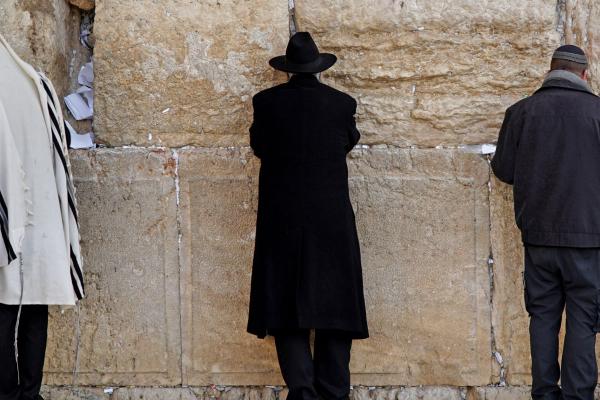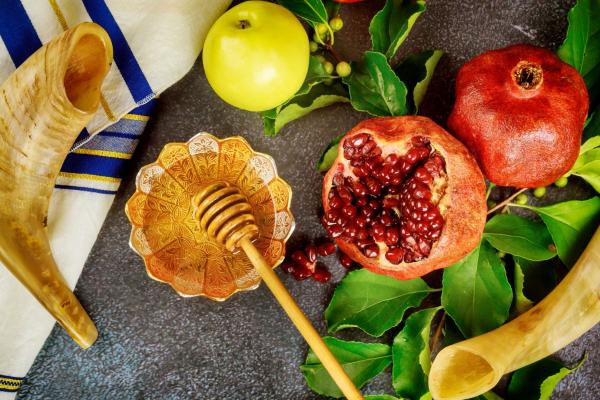Are you missing out? If you read only the New Testament, chances are you are missing the richness of the New Testament visible by understanding its Jewish roots, the very foundation upon which it was laid.
God sent His promised Messiah, Jesus, to Earth to live among us within the context of Jewish faith and history found in the Old Testament. Jesus was Jewish. He lived a Jewish life and taught with authority from the Old Testament as the One fulfilling its prophecies. He did not come to start a new religion; faith in Jesus as the Messiah is the “filling full” of Jewish faith through a redemption plan that God ordained from the beginning. He intentionally linked to His Old Covenant system of faith.
Jesus’ purpose on Earth was based on a Jewish foundation, on Jewish roots. The Jewish holy day of Yom Kippur offers a fundamental example of these Jewish roots of Christianity.
Yom Kippur, the Day of Atonement, is the holiest day of the Jewish year. It is a solemn occasion that focuses on our need for forgiveness and covering for our sins. God commanded the Jewish people to observe this Fall Feast in four specific ways (Leviticus 23:26–28):
- Do no work
- Gather for a sacred assembly
- “Afflict oneself”
- Bring sacrifices to the Temple
Today, Jewish people observe Yom Kippur with a day of rest, a 25-hour fast from all food and drink, including water (as well as certain luxuries and pleasures) and a synagogue service. Since the Temple’s destruction in 70 A.D., Yom Kippur’s sacrifices are those of the heart: prayer, repentance and works of righteousness and charity.
In the Tabernacle and Temple days, Yom Kippur was the one day each year the High Priest entered the Holy of Holies. He wore special garments of white linen as he took the blood of sacrificed animals behind the veil to the Ark of the Covenant and sprinkled it on the cover of the Ark, also called the Mercy Seat. Outside again, he placed his hand on the head of a perfect, unblemished goat, called the scapegoat, and recited Israel’s sins. The goat was led outside the camp, and Israel’s sins were atoned for another year.
This Day of Atonement is at the root of and reveals the Jewish essence of Jesus’ ministry on Earth. The New Testament book of Hebrews dedicates several chapters to expounding on these Jewish roots. It reveals amazing correlations between the biblical Feast of Yom Kippur and the atoning work that Yeshua HaMashiach (Jesus the Messiah) did for us. In it, you will see the Jewish foundation upon which Jesus’ sacrifice was laid. Here are a few highlights.
Jewish Roots: Levite Priests and Melchizedek
The high priests came from the Tribe of Levi, yet there was one from a different order: Melchizedek, the King of Salem, whom Abraham gave a tenth of all he had (Genesis 14:18–20).
Yeshua HaMashiach: Jesus, Our High Priest
Psalm 110 reveals the Messiah would be a priest according to the order of Melchizedek; Jesus was not from the priests’ Tribe of Levi but of Judah, yet is a priest forever (Hebrews 7:11–28).
Jewish Roots: Year After Year
To cover Israel’s sins, the high priest had to enter the Holy of Holies on the Day of Atonement every year (Leviticus 16:34, Hebrews 10:1).
Yeshua HaMashiach: Once for All
Jesus made a once-and-for-all sacrifice (Hebrews 10:10–12).
Jewish Roots: First for the Priest’s Sins
Before the high priest could make atonement for Israel’s sins, he first had to offer sacrifices to atone for his own and his family’s sin (Leviticus 16:11).
Yeshua HaMashiach: The Perfect High Priest
Jesus didn’t have to do this because He was without sin, a fitting and undefiled high priest (Hebrews 7:26–28).
Jewish Roots: Atonement Requires Blood
God proclaimed that the atonement – or covering – of our sin requires blood (Leviticus 17:11, Hebrews 9:22).
Yeshua HaMashiach: His Own Blood
Rather than the blood of bulls and goats, Jesus supplied His own blood, bringing it into the heavenly Holy of Holies and presenting it to God to atone for our sin (Hebrews 9:12).
Jewish Roots: Entering the Holy of Holies
The high priest entered the Holy of Holies knowing that his impurity in the face of God’s holiness meant that if he did something wrong, he could die (Leviticus 16:13, Leviticus 10:1–2, 2 Samuel 6:6–7).
Yeshua HaMashiach: Entering with Confidence
Jesus offered Himself without spot or blemish to God. Therefore, He entered the Most Holy Place without concern. His sacrifice enables us to approach the throne of God with confidence as well (Hebrews 10:14, 19, 22).
Jewish Roots: Sins Placed on the Scapegoat
Yom Kippur required the high priest to lay his hands and symbolically place the sins of Israel on a live goat known as the “scapegoat”(Leviticus 16:21–22).
Yeshua HaMashiach: Our Sins Placed on Him
Isaiah prophesied of the suffering Messiah upon whom all our sins would be placed. The New Testament Scriptures tell us that Jesus took our sins upon Him to the extent that He became sin for our forgiveness (Isaiah 53:6, 2 Corinthians 5:21, Hebrews 9:26).
Jewish Roots: Symbolically Sending Israel’s Sins Away
The scapegoat was led into the wilderness and abandoned, representing the carrying away of sin (Leviticus 16:21).
Yeshua HaMashiach: Removing Our Sin and Making Us Holy
Jesus put sin away from us for good. The blood of His sacrifice removes our sin and even makes us holy (Hebrews 9:26, 10:10, 14).
Chapters 4–10 in the book of Hebrews are based entirely on the Jewish roots of the Old Covenant. In their text, we see the filling full of God’s sovereign design. First, He established a sacrificial system that presented an overwhelming reminder of our sin’s gravity and the high price that innocent lives paid on our behalf. He promised that one day a Redeemer would come and usher in a New Covenant. Jesus the Messiah did come, and He bore away forever the sins of those who place their faith in Him (Jeremiah 31:31–33, Isaiah 53, Hebrews 7:25).
The Bible is one story, one cohesive account of God’s interaction with humanity through the Jewish people. When we set the Old Testament’s descriptions of the Day of Atonement next to Jesus’ sacrifice, as the author of Hebrews did, we see God’s marvelous attention to detail and the intentionality of His ways. We can grasp more fully the depth and magnitude of the Gospel’s good news. Understanding the Jewish roots of Christianity does this for us, and Yom Kippur is a profound example.











